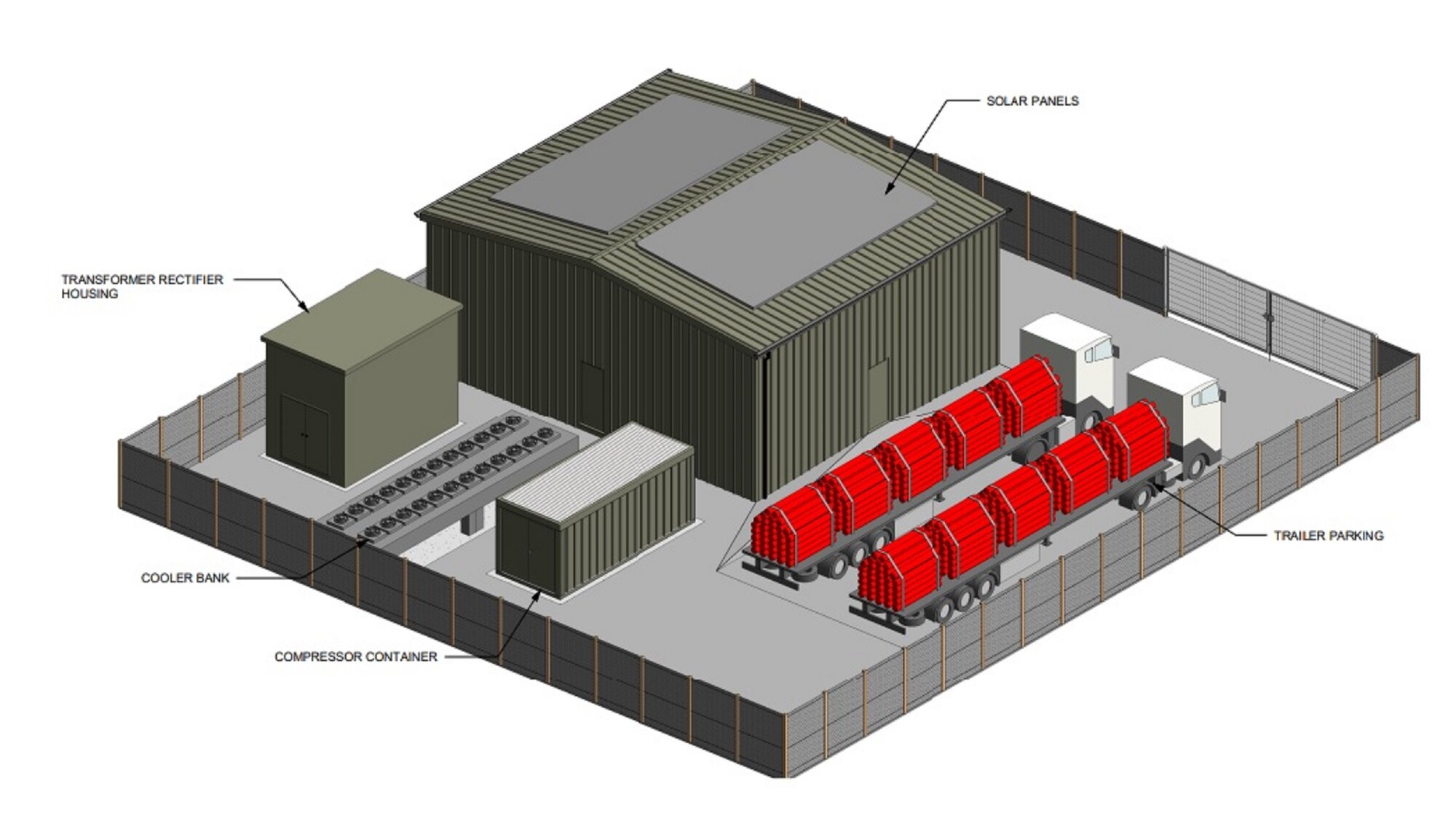
Fisher German has secured planning permission for an innovative sustainable hydrogen energy scheme at a farm in Nottinghamshire which is set to be one of the first in the UK. The project at Featherstone House Farm in Bilsthorpe is a new approach in generating fuel from sustainable and renewable sources and takes the UK a step towards carbon neutral energy production.
The development comprises of the installation of a 1.25 megawatt electrolyser inside a building based within a secure compound that will be adjacent to solar farms and a wind turbine already at the farm. The electrolyser will use energy from the solar farm and wind turbine to turn water into green hydrogen, which once turned back into electricity through a fuel cell only emits water vapour and air.
This is in line with the Government’s Clean Growth Strategy which seeks to promote new innovative technologies to support the generation of clean power and fuel to drive the reduction in greenhouse gas emissions. Once generated, the fuel can be taken for use off-site, or there may be the potential future option for the landowner to use farm vehicles powered by the green fuel.
The planning application was submitted on behalf of C A Strawson Farming Ltd, who have worked closely with our teams for many years.
As the UK moves towards becoming carbon net zero, we expect the schemes to become increasingly popular, opening up new opportunities for farmers and landowners who are unable to connect to the grid.
Senior Partner Tim Shuldham, who is also a director of C A Strawson Farming Ltd, said:
“Constructing a new hydrogen facility in open countryside adjacent to where electricity is being generated by renewable energy and then converting and storing this energy in the form of a gas is a new and interesting concept. Tony Strawson and his family have been innovators in farming and this is an obvious direction for them to move in.
“Hydrogen is an evolving market, but one that is rapidly moving up the agenda as the UK looks to reduce greenhouse gas emissions, so we would expect these schemes to become increasingly popular. Not only do they generate green energy, they also open up huge opportunities for farm diversification where it has not been possible to connect to the grid.
“Accessing the grid is one of the big constraints faced by farmers and landowners looking to construct solar panels and wind turbines, with many not having overhead powerlines across their land and some not being able to connect due to the grid being at full capacity in their area. Having an electrolyser means that access to the grid is no longer required, and the energy can be converted into another product which has green credentials and is saleable.
“It also means that those with established wind turbines and solar parks can open their eyes to new markets rather than just supplying energy to the grid, providing they are not in a supply contract. Schemes like this have the potential to deliver the stored energy to the end user which could, for instance, be hydrogen powered buses in a city centre.
“As further research is done in the industry, we may also soon see hydrogen powered farm machinery which would enable farms to generate the energy on-site to power their own vehicles. It is a very exciting concept which would support farming in achieving its zero-carbon target.”
With no specific planning policies for hydrogen energy schemes in place, our expert teams created a robust submission which addressed issues such as ecology, archaeology, and drainage upfront and highlighted the environmental credentials.
The planning application was submitted to Newark and Sherwood District Council, who was in full support of the application and gave approval within the eight-week time frame.
Partner Sarah DeRenzy-Tomson, led the planning process. She said:
“This is a new area of technology and only a handful of planning applications have been approved for schemes of this nature. The development appears industrial in character and appearance which is not normally appropriate in an open countryside setting.
“However, the merits of locating the facility adjacent to the point at which the electricity was being generated by the solar and wind farm was understood by the local authority. The district council also recognised the environmental benefits of the scheme as the Government looks to move towards a low carbon future and to reduce greenhouse gas emissions by at least 80 per cent by 2050 when compared to 1990 levels.
“We are pleased to have secured consent for this innovative scheme on behalf of the landowners, who are particularly keen to promote sustainable energy production and embrace new innovative technologies. There is a clear drive to boost production and use of hydrogen for energy and once implemented, this scheme will make an important contribution towards this goal.”
If you’re interested in finding out more about the sustainable energy services we offer, or are considering planning permission for a similar venture, get in touch with our teams.





